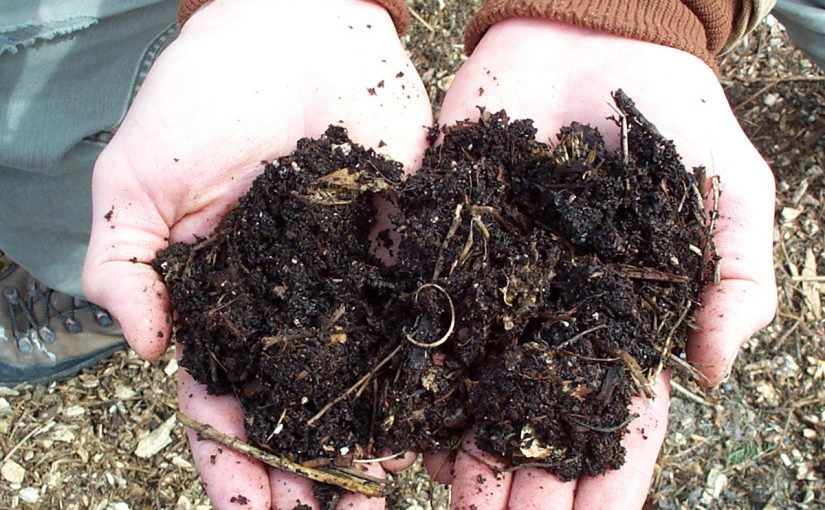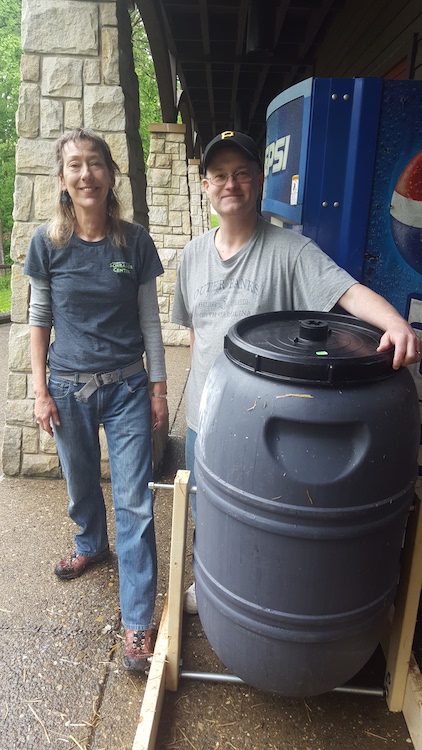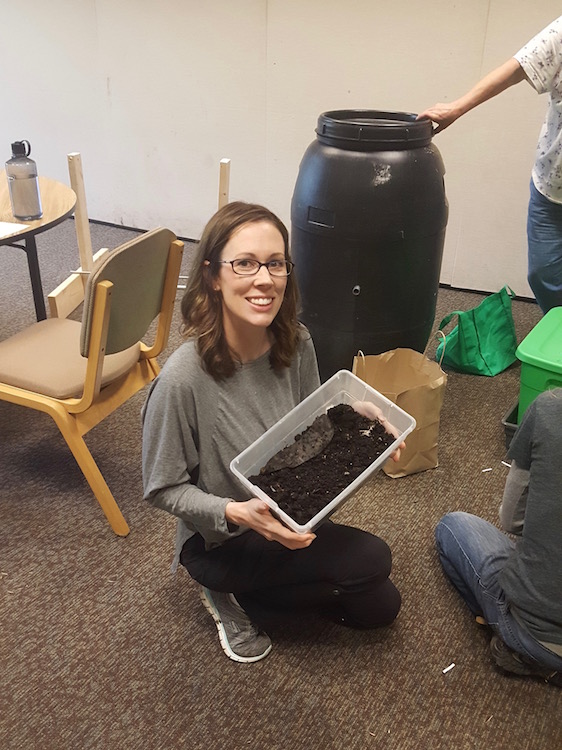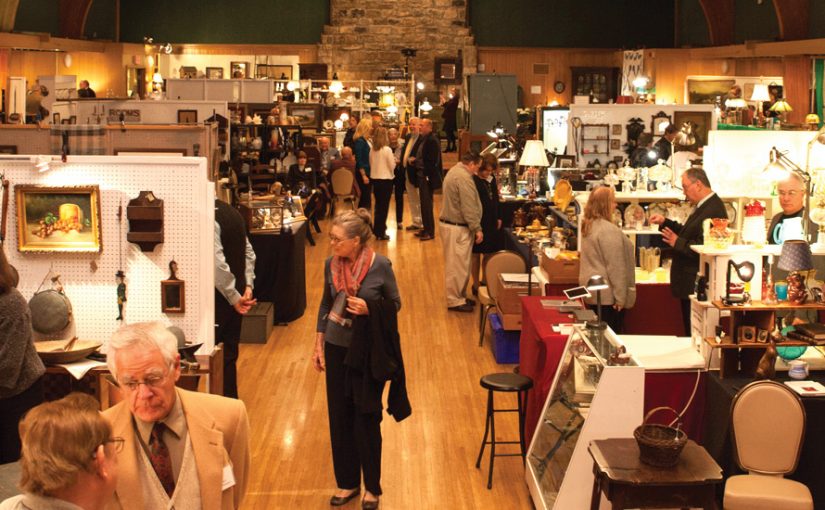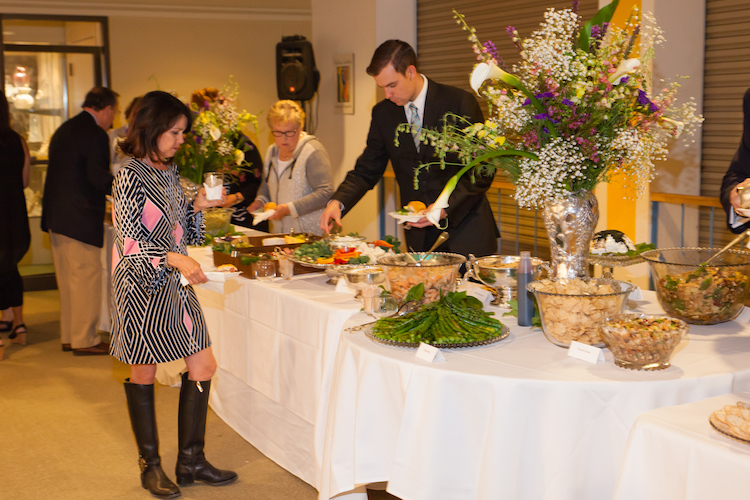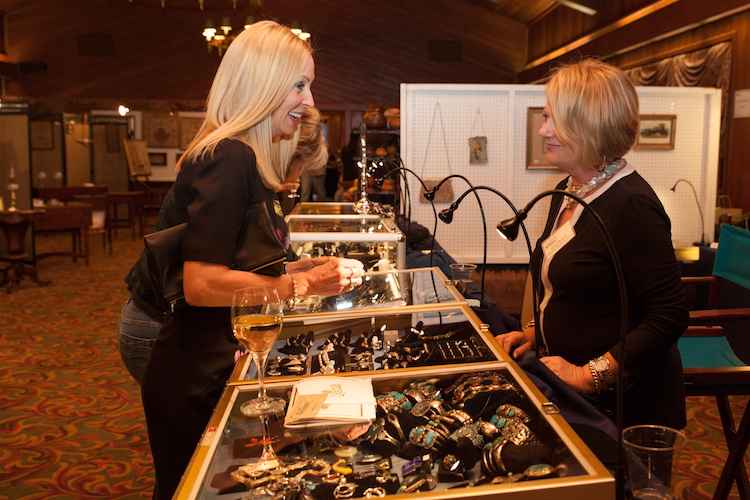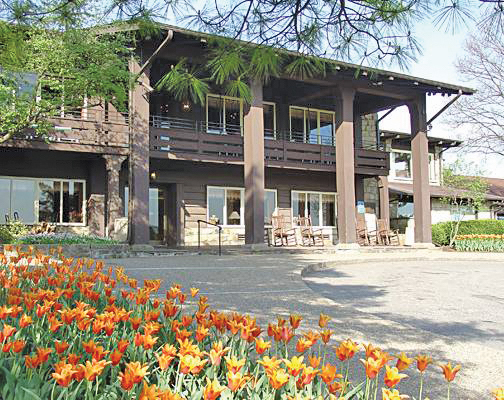(Blogger Laura Jackson Roberts writes about her experiences at the Schrader Center’s Composter & Rain Barrel Workshops)
Build Your Own Composting Bin
I’m pretty proud of myself. For years I’ve been wanting to get into the composting scene. You didn’t know it was a scene? Oh my, yes. Composting is most certainly a worthwhile activity. Are you a gardener? Do you love your houseplants? Do you have kids who like nature and hands-on projects? Do you eat food?
If you answered yes to any of these questions, then composting is the way to go. I’ve known about composting all my life, but I’m not handy enough to build my own composting bin. Also, I’m cheap enough that I’ve never been willing to shell out for ones in gardening supply catalogs. Talk about a rock and a hard place. What I really need is a little help getting started.
You Can Assemble Rain Barrels, Too!
My husband, Shawn, and I also took a rain barrel class at Oglebay Institute’s Schrader Environmental Education Center. We each assembled a barrel. While it’s true that he assembled his more quickly, my barrel definitely had more pizzazz. It was a fun, and we came home with two rain collection devices that we used all summer to water the gardens and fill up the fish pond. Our water bills dropped considerably. This past weekend, however, we decided to work together rather than compete. The goal: assemble a compost bin with Robin Lee, an educator at Schrader.
Why Should We Compost?
But why, you might ask. Why should I drive all the way up to the Schrader Center and build my own bin? We all have weekly visits from the garbage trucks, right?
Well, yes, we do, and those garbage trucks drive to landfills. Landfills are filling up. Garbage incineration isn’t as popular as it once was. By composting your yard and food waste, you’re taking some of that mass out of the landfills and putting nutrients back into your plants. If you’ve ever compared a tomato plant grown with composted soil amendments to one grown without, the difference is significant.
Many schools are participating in composting, too. Children who grow up composting not only gain a sense of environmental stewardship, but they get to watch and learn about the cycle of decomposition and renewal. Today’s potato skin and yard clippings are next month’s zucchini plants.
According to the Cornell Waste Management Institute’s composting information page, “Contrary to the ‘out of sight, out of mind’ philosophy, children who compost become aware of organic wastes as potential resources rather than just as something ‘gross’ to be thrown away and forgotten. They learn through direct experience that they personally can make a difference and have a positive effect on the environment.”
We certainly need a new generation of active environmental stewards. Composting literally begins children at the ground level, the most basic first step. From there they may move on to gardening. What’s more important is that they feel a part of the process. It’s science and sustainability and fun.
So, What Can You Compost?
So what can you compost? Robin explained to us that the bin functions most effectively with a 3:1 ratio of browns to greens. Browns represent the carbon component, and include straw, fall leaves, corn stalks, shredded black and white newspapers, twigs…heck, toss your dryer lint in there. The greens, on the other hand, fulfill the nitrogen requirement; greens are things like vegetable and fruit waste, eggshells, coffee grounds and filters, grass clippings, and even the discarded contents of Hammy the Hamster’s cage.
By sticking to the 3:1 ratio, you’ll ensure that your greens don’t produce an unpleasant odor, and you’ll attract the right bacteria for faster decomposition. Since it’s spring, and we don’t have a lot of browns, Robin sent us home with some straw. Last autumn’s leaf pile that you’ve been meaning to rake up for eight months will also fit the bill.
Barrels, Worms & Bananas… Oh, My!
Assembling the barrel was easy, and as we were finishing up, Robin asked us if we were interested in learning about vermiculture, an alternative, worm-based composting process. If you’ve read my blogs in the past you’ll know that I have two rowdy young boys, so of course I decided to bring home worms.
Rather than living in a traditional compost bin outside, the worms—“Red Wigglers,” far smaller than our native earthworm and more effective at their job—live in a plastic shoebox in the basement or on the back porch. They feed on things like banana peels and leftover green beans and in return produce a dark, rich compost that can amend soil in its solid state or be used to produce what’s known as compost tea. The latter can be added to a watering can for house or garden plants.
I brought the wigglers home and they received their due admiration from the kids before promptly beginnning work on a discarded banana peel. Three days later, 5-year-old Ben has made it his sworn duty to feed the worms and make sure they feel welcome in our home. Each day he notices that the banana peel continues to break down.
As the wigglers reproduce, we can expand the size of our bin or keep them where they are. Given the number of houseplants I’ve acquired over the years, I look forward to this cold-weather source of compost.
Sign Up!
This spring, the Schrader Environmental Education Center will again offer these classes. Or, if you’re already a pro, you can head up there and purchase a kit to assemble at home. They’ve got bins and barrels and worms and endless help and advice for the novice and the expert alike.
The Composer Workshop takes place Saturday, April 1. The Rain Barrel Workshop takes place Saturday, April 29. Register online or call 304-242-6855.

